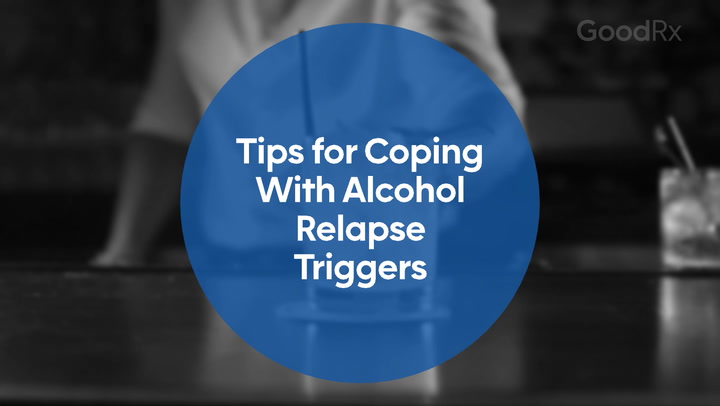
Is Marijuana Addictive? 11 Signs You Might Have Cannabis Use Disorder
Key takeaways:
Long-term and frequent use of cannabis (marijuana) can lead to cannabis use disorder.
Trying to quit but not being able to is one sign that you may be addicted. Other signs are: giving up social activities to use cannabis instead and continuing to use cannabis even if it causes problems in your personal life.
If you think you may be addicted to cannabis, there are various ways to find help, whether or not you have health insurance.
Access savings on related medications
Table of contents
Even though it’s still technically illegal nationwide, cannabis is one of the most commonly used drugs in the U.S. Though cannabis can be helpful for certain health conditions, it can also be misused and even lead to addiction, known as cannabis use disorder. In fact, the CDC estimates that about 3 out of every 10 people who use cannabis have a cannabis use disorder. This means they can’t stop using cannabis, even when it’s causing major problems in their life.
So, how do you know if your personal or medicinal cannabis use has gotten out of hand? Let’s take a closer look at what you might notice if you (or a friend or family member) has a marijuana or cannabis use disorder.
What is marijuana and how does it work in the body?
Though people use the words “marijuana” and “cannabis” interchangeably, they don’t mean the same thing. The word “cannabis” refers to the cannabis plant, which contains more than 80 active chemicals called cannabinoids. The word “marijuana” refers to cannabis plants that contain a lot of delta-9-tetrahydrocannabinol (THC) and create the feeling of a high.
Two of the main substances found in cannabis are THC and cannabidiol (CBD). These are known as cannabinoids. There are more than 100 other cannabinoids, but CBD and THC are the ones we know the most about:
THC is well-known for its ability to cause a euphoric “high” feeling, along with a loss of concentration, slowed speech, and an altered sense of time. It’s also used medically in some people for pain relief, improved appetite, and reduced nausea and vomiting.
CBD won’t make you high, but it may make some people feel relaxed, sleepy, and less anxious and stressed. Except for seizures, we don’t know much about its potential medical uses. CBD is being researched for many different conditions, including anxiety and depression, chronic pain, and substance use disorders.
We’ll use the word cannabis throughout this article, because it’s the scientific term for the plant. It’s also known as “weed,” “pot,” and many other slang terms.
Can you get addicted to marijuana?
Yes. Just like alcohol, tobacco, and other substances, it’s possible to get addicted to cannabis. Cannabis or marijuana addiction is also called “marijuana use disorder” or “cannabis use disorder.”
Developing cannabis use disorder is especially likely with long-term and frequent use. People with cannabis use disorder can have many different symptoms that cause problems at work, school, and home. It’s also possible to become physically dependent on cannabis, which means that you have withdrawal symptoms when you’re not using it.
How does using marijuana lead to dependence and addiction?
It’s not totally clear. But we do know that using cannabis often and for a long period of time can sometimes cause physical dependence. This may happen because your brain slows production of its own endocannabinoids when it gets used to having cannabis in your system. Endocannabinoids are special molecules that your body needs to function properly.
Additionally, THC in cannabis stimulates the body’s “reward system” — a process that produces pleasure in response to certain behaviors. This process releases a chemical called dopamine at levels higher than what is considered natural. This large amount of dopamine encourages the brain to continue this rewarding behavior of using cannabis, which might contribute to its addictive potential.
How addictive is marijuana?
It’s hard to say. There’s some evidence that about 1 in 10 people who use cannabis will develop dependence sometime during their lifetime, which is lower than other substances like alcohol, cocaine, and heroin. Cannabis use disorder is also more likely in some groups, like people who start using cannabis at a young age or who use it on a regular basis.
It’s also possible that rates of cannabis use disorder might change in the U.S., for two main reasons. First, cannabis use in the U.S. seems to be going up. And second, the cannabis that’s now available is more potent than it used to be. Could these two changes lead to higher rates of cannabis use disorder? We just don’t know yet for sure (more on these topics below).
11 signs of marijuana use disorder: How to know if you’re addicted
Cannabis use disorder has many different symptoms. If you have two or more of the following, it’s possible that you could have cannabis use disorder — especially if your cannabis use is causing problems at home, work, or school:
You use a larger amount of cannabis than you meant to, or you use it for a longer period of time than you intended.
It’s hard to cut back or control your cannabis use, even if you want to.
You spend a lot of time trying to get cannabis, use it, or recover from its effects.
You have a strong desire or “craving” to use cannabis.
You don’t fulfill all your daily obligations because you’re using cannabis so often.
You keep using cannabis, even though it is causing you problems in your social life or with people close to you.
You skip important activities with friends or family, or for your job, because you’re using cannabis.
You keep using cannabis even if it puts you in physical danger.
You keep using cannabis even though you suspect it’s causing physical or mental health problems, or making them worse.
You need to use more cannabis in order to get the right high, because you’ve become tolerant to it.
You have withdrawal symptoms if you’re not using cannabis, like mood changes, sleep problems, headaches, sweating, or an upset stomach.
Risk factors for marijuana use disorder
There are many factors that may predict how likely you are to develop substance use disorders for particular drugs. For cannabis, there are a few things that may put you at greater risk for cannabis use disorder. These include:
Frequent cannabis use
Having parents who use cannabis
Having family members with cannabis use disorder
Being male
Starting to use cannabis between ages 18 and 24
Using alcohol, tobacco, or other substances
Having other social problems or health problems
Having depression or anxiety as a child or teenager
Experiencing traumatic events as a child or teenager
Does the legalization of marijuana lead to increased use and addiction?
To date, medical cannabis programs have been approved in:
38 states
District of Columbia
Guam
Puerto Rico
U.S. Virgin Islands
Meanwhile, cannabis is legal for personal use at the state level in:
23 states
District of Columbia
Guam
Northern Mariana Islands
It is not clear yet if there’s been a significant amount of increased use and cannabis use disorder in the states where cannabis is now legal. We need more research — and time — to know for sure.
A 2023 review of 61 different studies on this topic had mixed findings. There was some evidence that legalization did have negative consequences, like more young adult use and more visits to a healthcare provider’s office. But there was also evidence on the other side: that legalization didn’t really change how much people used cannabis. It also wasn’t clear how long-term these consequences were.
Is the rising potency of marijuana contributing to overuse or addiction?
Since the 1970s, the strength of THC in cannabis has increased — and might even still be increasing. This may be due to the fact that more countries and states have legalized medical or personal cannabis. But unfortunately, at this point we just don’t have a lot of research on whether these rising THC levels are linked to cannabis use disorder.
One study performed in the U.K. looked at about 1,000 people who were 24 years old to see if cannabis with a lot of THC — also called “high-potency” cannabis — had any effect on how frequently they used cannabis or on their mental health. The study showed that people who used high-potency THC products did have increased cannabis use, problems related to cannabis use, and increased likelihood of anxiety disorder. However, these results are from one study only.
More studies are needed to determine whether the higher strength of THC in cannabis contributes to overuse or cannabis use disorder. In the meantime, the Substance Abuse and Mental Health Services Administration (SAMHSA) cautions that “more THC is likely to lead to higher rates” of cannabis dependence and cannabis use disorder.
Marijuana addiction treatment
Currently, there are no medications approved by the FDA to treat cannabis use disorder. Some medications have been studied to help with treating withdrawal symptoms that may come with stopping cannabis:
Zolpidem (Ambien)
Buspirone (Buspar)
Gabapentin (Neurontin)
These may help improve symptoms like inability to sleep, irritability, and anxiousness. However, none of these have been studied extensively enough or have good enough evidence to be approved by the FDA at this point. Additionally, an over-the-counter (OTC) supplement, N-acetylcysteine, has been studied for its potential to lessen withdrawal symptoms by stopping the breakdown of the body’s own endocannabinoids.
Some behavioral treatments can be effective in treating cannabis use disorder. These include:
Motivational enhancement therapy (MET)
Talk with your healthcare provider if you would like to learn more about your options for treatment.
Where can I go to get help with a marijuana addiction problem?
SAMHSA has a confidential, free, 24/7, 365-day-a-year information service that anyone can call at 1-800-662-HELP (4357). This is a good place to find options for local treatment facilities, support groups, and community-based organizations, whether or not you have insurance. Some people may need treatment at an inpatient facility. Meanwhile, others may be able to work with a healthcare professional in an outpatient setting to quit cannabis.
If you have health insurance, you can start by contacting your insurer for a list of covered providers and facilities that treat cannabis use disorder.
The bottom line
Cannabis contains THC, a well-known substance that can alter your mind and create the feeling of a “high.” Each individual U.S. state has different laws on cannabis use, with some states legalizing both medical and personal use. While the negative and positive health effects of cannabis are often debated, long-term and frequent cannabis use can lead to cannabis use disorder.
Why trust our experts?



If you or someone you know struggles with substance use, help is available. Call SAMHSA’s National Helpline at 1-800-662-HELP (4357) to learn about resources in your area.
Keep in mind that cannabis is legal in some states for personal and/or medicinal use, but not in others. Cannabis is still illegal under federal law. Before you use cannabis products, find out the laws in your state.
References
Cascini, F., et al. (2012). Increasing delta-9-tetrahydrocannabinol (Δ-9-THC) content in herbal cannabis over time: Systematic review and meta-analysis. Current Drug Abuse Reviews.
Centers for Disease Control and Prevention. (2020). Addiction (marijuana or cannabis use disorder).
Centers for Disease Control and Prevention. (2023). Marijuana and public health.
Centers for Disease Control and Prevention. (2023). What we know about marijuana.
Cougle, J. R., et al. (2016). Probability and correlates of dependence among regular users of alcohol, nicotine, cannabis, and cocaine: Concurrent and prospective analyses of the National Epidemiologic Survey on Alcohol and Related Conditions. The Journal of Clinical Psychiatry.
D’Arrigo, T., et al. (2020). Cannabis withdrawal syndrome affects nearly half of those who quit. Psychiatric News.
Farrelly, K. N., et al. (2023). The impact of recreational cannabis legalization on cannabis use and associated outcomes: A systematic review. Substance abuse: Research and treatment.
Fleury, M. J., et al. (2022). Profiles of individuals with cannabis-related disorders. Substance Abuse.
Hines, L. A., et al. (2020). Association of high-potency cannabis use with mental health and substance use in adolescence. Journal of the American Medical Association Psychiatry.
Lopez-Quintero, C., et al. (2011). Probability and predictors of transition from first use to dependence on nicotine, alcohol, cannabis, and cocaine: Results of the National Epidemiologic Survey on Alcohol and Related Conditions (NESARC)*. Drug and Alcohol Dependence.
Marples, M., et al. (2022). Legalizing recreational cannabis increases its use, research shows. CNN Health.
National Center for Complementary and Integrative Health. (2019). Cannabis (marijuana) and cannabinoids: What you need to know.
National Conference of State Legislatures. (2023). State medical cannabis laws.
National Institute on Drug Abuse. (2019). Cannabis (marijuana) DrugFacts.
National Institute on Drug Abuse. (2020). Cannabis (marijuana) research report: Available treatments for marijuana use disorders.
National Institute on Drug Abuse. (2020). Cannabis (marijuana) research report: How does marijuana produce its effects?
National Institute on Drug Abuse. (2020). Research report substance use in women research report: Sex and gender differences in substance use.
National Institute on Drug Abuse. (2022). Cannabis potency data.
Reuters. (2023). U.S. states where recreational marijuana is legal.
Sherman, B. J., et al. (2016). Treatment of cannabis use disorder: Current science and future outlook. Pharmacotherapy.
Substance Abuse and Mental Health Services Administration. (2023). Know the risks of marijuana.
Tomko, R. L., et al. (2018). N-acetylcysteine: A potential treatment for substance use disorders. Current Psychiatry.
U.S. Food and Drug Administration. (2020). What you need to know (and what we’re working to find out) about products containing cannabis or cannabis-derived compounds, including CBD.
Volkow, N. D., et al. (2014). Adverse health effects of marijuana use. The New England Journal of Medicine.
Winters, K. C., et al. (2008). Likelihood of developing an alcohol and cannabis use disorder during youth: Association with recent use and age. Drug and Alcohol Dependence.
If you or someone you know struggles with substance use, help is available. Call SAMHSA’s National Helpline at 1-800-662-4357 to learn about resources in your area.

























